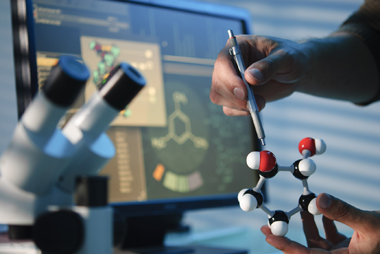The biochemical composition of yeast reveals a product containing several elements which, when ingested by a living being, contribute to the smooth operation of its organism. This living being can be human, animal and even plant.
The latter is the subject of a recent research field. Yeast can therefore not only act as a food supplement, but as a natural fertiliser. Some yeasts thus improve plants' capacity to take nutritive elements from the soil which they use for their growth. They thus act as a totally inoffensive natural fertiliser for humans and animals. Researchers also work on the use of yeast to control plant disease or act against mould in fruit: an organic alternative to chemicals.
Yeast is already commonly used as a food supplement by humans and as an additive in pet food. In particular for its high vitamin B, D2 or protein content. Research actively strives to improve production of these beneficial nutriments.
The application of yeasts as probiotics is another very dynamic area of diversification in terms of scientific publications. The results are very promising and outline a wide range of new applications.
Not only does yeast interact beneficially with intestinal microflora by favouring healthy bacterial groups, it also interacts with certain pathogens by occupying the space they could invade (barrier effect) and acting directly on some of the toxins they give off that have a negative impact on human or animal health.
Only recently, researchers discovered the "dialogue" between yeast, the intestinal microflora and the host - human, animal or plant - in cases of inflammation or immunity reactions. This field, which is currently being decoded, is a genuine scientific revolution In animal health, it opens new vistas including the improvement of milk production in ruminants or the use of probiotics as growth factors to replace antibiotics in pigs.
 People instinctively link yeast to bread and baking tradition.
People instinctively link yeast to bread and baking tradition.





